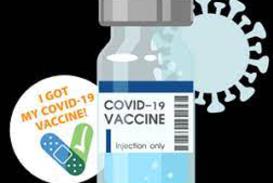6 PILLARS OF MARKET ACCESS STRATEGY FOR HEALTHCARE EMERGING MARKETS
by John G. Baresky on 11/08/19
A pivotal element in global healthcare marketing initiatives
The global healthcare marketplace continues to evolve. Pharmaceutical manufacturers, medical device manufacturers and healthcare service companies have promising opportunities through emerging markets. These patient / customer bases are multiplying in population and in financial resources generating a greater demand and means for better healthcare.
Seeking new revenue streams dependent upon regulatory, clinician and payer factors
Pharma,
device and health services firms, always seeking growth and new revenue
streams, can look to these regions and countries to extend their reach and
boost bottom lines. Comparatively speaking, many of these markets are
experiencing exponential population and financial growth while numerous North
American and European markets have matured and have slowing, flat or regressing
clinical and commercial opportunities. Further challenges are presented by
well-entrenched incumbent competitors able to maintain more than their “fair
share” of the market.
Key
growth drivers in emerging markets
A combination of factors improves the alignment of potential for growth of clinical and commercial opportunities in emerging markets. They include these and other developments:
- Commercial vibrancy based on greater import / export activity
- Political stability
- Improved educational resources
- Domestic / international academic healthcare interests
- Domestic businesses partnering with outside commercial organizations / investors
- Diversified economies expanding beyond agriculture and basic manufacturing
- Better access to information and technology via Internet, wireless, mobile
Changing
healthcare needs
As emerging markets evolve, their healthcare challenges and requirements develop new characteristics. They encompass these and other factors:
- Birth rates climb and life expectancy lengthens
- Legacy illnesses / disease native to specific locales and regions decline but remain a threat in rural or remote areas
- New diseases and health challenges emerge based on a higher quality of living including alcoholism, diabetes, hypertension, obesity, sexually transmitted diseases
- Increasing populations increasing strain on metropolitan living / sanitary conditions and surrounding natural resources
Examples
of emerging market nations / regions
Multiple continents and geographic centers host emerging markets. The primary emerging market leaders ( listed alphabetically ) are:
- Brazil
- Chile
- China
- India
- Indonesia
- Mexico
- Philippines
- Russia
- South Africa
- South Korea
- Turkey
Setting the stage for clinical and commercial success
In
established or emerging markets, growing from scratch or expanding from a
sliver of market share and sales can be daunting and costly. By identifying and
accounting for hurdles upfront, it’s easier to avoid bottleneck delays and cost
overruns to maintain momentum. Strategic preparation focused on the specific
attributes of a new market instead of a generalized approach will enable you to
develop the necessary building blocks to succeed as your competition
struggles.
Prioritizing the right potential markets from the start
The
array of emerging markets requires selectivity and alignment according to your
organization and its products or services. Prioritizing the best ones increases your
chances of success and establishes a base of experience and education to succeed
in future ones. Assuming commercial viability of your product or service has been confirmed based on these
considerations; these are 6 pillars of strategy to build your growth on.
Pillar One:
Embrace the regulatory environment, structure and process
Nations and regions have their own way of governing clinical and commercial healthcare activities within their borders. Do not assume your teams can learn on the go. Be certain you have staffed up with persons who have experience in the specific market you are centered on and have existing contacts within regulatory agencies, provider organizations and supply chain entities. This helps assure you navigate the approval process and can speed forward into the market once your offering receives clearance.
Pillar Two:
Understand patient care topography
Treatment protocols and access to care can differ greatly within the boundaries of even small nations. Neglecting to engage even one or two centers of care like a remote hospital or clinic can cost you hundreds or even thousands of patients. If those entities are missed, your losses could multiply if their patient base expands due to marketplace growth changes and competitors exploit your errors. Stratify points of care and their nuances:
- Metropolitan
- Semi-rural
- Rural
- Remote
Be
cognizant that an area can robustly change based on investment in
manufacturing, shipping or other commercial activity. New business
opportunities quickly attract new workers with healthcare needs to their locales
Pillar Three:
Familiarize yourself with clinicians, protocols, customs
Established
nurses, doctors, pharmacists and other members of the healthcare provider
community need to be consulted early and often. This will accelerate your
learning curve and help these future customers become intimately familiar with
your company, its products and services and increase their comfort level. Do
not rely on assumptions, syndicated reports or second-hand “expert” knowledge
to base your strategy and tactics on. Even small disconnects will leave gaps
competitors will fill quickly.
Be
prepared that “new” is not always immediately perceived as better. Certain
drugs, medical devices and procedure protocols have been in place for decades
in many emerging markets. Think simplicity, utility and economy; generic drugs,
basic devices, outdated apparatus and equipment retrofitted for improvised
use to make do with whatever was available at the time and thus has become the
standard for care.
Effectively
introducing new therapies, devices and equipment accompanied by new methods
takes time and money. Engaging the key clinician stakeholders and accounting
for their personal, professional and organizational personas will make for a
more productive introduction and quicker acceptance of your offerings. Distinct
care, cost and overall outcome advantages must be featured in a value
proposition meeting the requirements of each emerging market you enter and the
decision making stakeholders involved.
Pillar Four:
Unconventional or restrictive distribution and procurement processes
Emerging
markets have their own unique ways to facilitate the flow of goods and services
into and through points of care. Reflect on how wholesalers, distributors,
suppliers, GPOs, dealers and other supply chain, logistics and trade relations
entities differ within cities, states, nations and regions in established
markets. This goes for evaluation, procurement, materials management and
requisitioning processes and procedures within healthcare provider
organizations. The primary difference is your organization has become familiar
with these channels and routines.
You
will now have to repeat this process in an emerging market. Be certain to act
on it quickly because your competitors could thwart your success early on if
they adapt earlier than you. The sooner you accept and adjust your processes in
accordance with the emerging market’s structure and material flows the better
your operations will perform and ease the way for customers to use your
products and services.
Pillar Five:
Contracts and pricing
While
emerging markets usually possess a surge in economic prosperity, do not assume
this translates to a maximum in your margin ask. It is also necessary ( and
this should have been a part of your emerging market commercial viability
assessment ) to understand the contracting, pricing, exclusivity and other
features within each emerging market you choose to enter. The similarities
between emerging markets may seem to mirror each other but even one financial
requirement or clinical mandate may disadvantage your marketing, sales and
pricing strategies from the start.
Supply
chain players and provider organization processes aside, knowing the payer
landscape inside and out for each emerging market you choose to enter is a
pivotal advantage. By possessing this, you have the opportunity to lock in a
new market with the assurance your products and services will flow freely in
the direction of your customers and their payments back to you will be just as
smooth.
Government-sponsored healthcare can be a norm in emerging markets you will have to account for. As emerging markets develop, government healthcare programs may improve while conventional payer business models become more common as outside companies establish their presence and introduce benefits plans to workers plus organizations native to the marketplace modernize their healthcare offerings. Updated or new healthcare plans offered by insurance carriers or employers will still need to meet the cost, coverage and feature requirements of government regulators.
Improvement of government payer healthcare benefits and the presence of more commercial healthcare insurance plans entering an emerging market are good building blocks to center market access contracts and pricing strategies on.
Pillar Six: Maximize competitive immunity
Throughout development and execution of your market access strategy, continually refine and reinforce your competitive position. Emerging markets are attractive to all players; many will deploy all means necessary to enter them including drastic price plays, unrealistic guarantees and other measures. Anticipate these threats from the start and be certain your contracts are well-secured and have sound contract extension / renewal strategies in place to minimize opportunities for competitors to penetrate your established base of market share and sales. Monitor government or provider policy changes that may disadvantage your position and move in advance to rectify any weaknesses these create.
Moving forward
Taking the journey into emerging markets can be a rewarding venture by avoiding the mistake of focusing too much on the raw potential of a new opportunity and not centering on intricacies involved to assess, develop and maintain successful market access strategies and tactics from the beginning. Launching a product or service in an established or emerging market can be costly and risky no matter how innovative they are. It is important the resources allocated to entering emerging markets ( time, money, staff and other provisions ) are deployed efficiently and effectively to minimize waste and maximize traction.
In emerging markets, it is imperative to account for the customs, needs and requirements of regulatory gatekeepers, logistical channels, clinical and commercial stakeholders to formulate an effective market access strategy -and do it better than your competition.
LinkedIn: John G. Baresky
Twitter: Healthcare Marketing Guy

